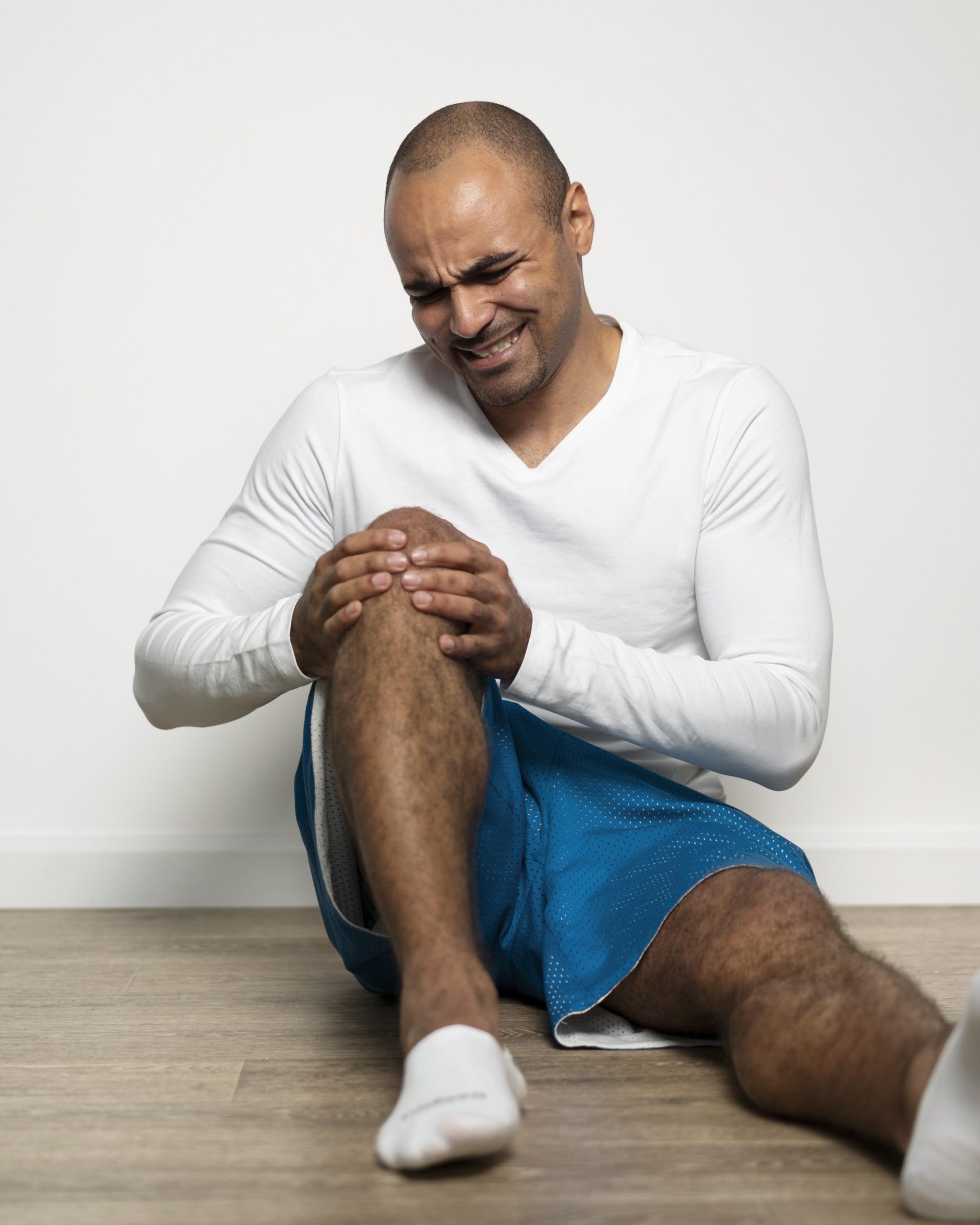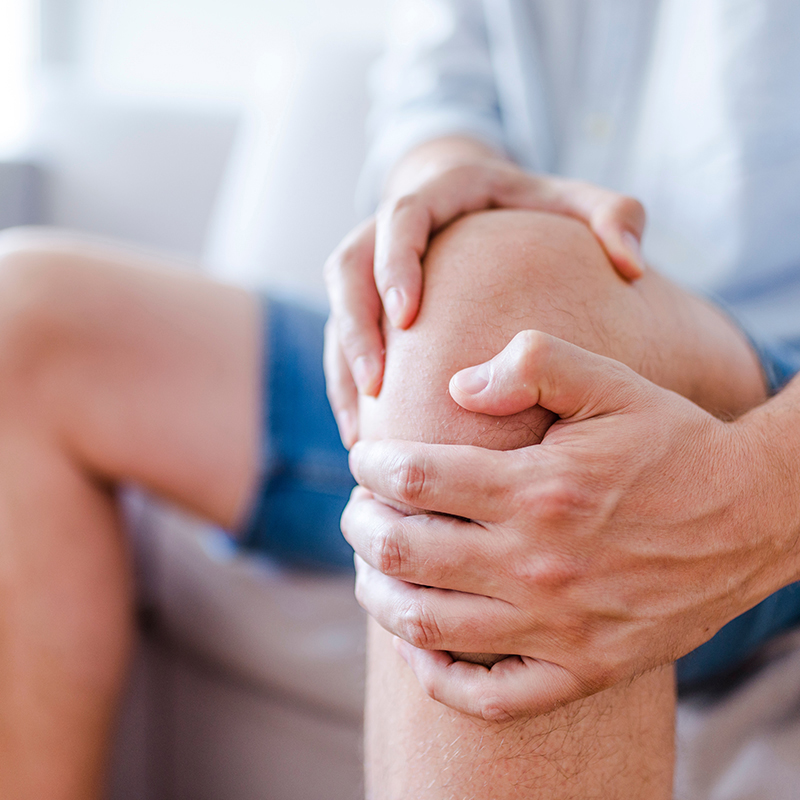Athlete Recovery with Stem Cell Therapy
Vibrant Health Care
Are you tired of persistent knee pain ruining your day?
Do you want to regain your freedom to enjoy your favorite activities? Vibrant Health Care offers non-surgical knee pain treatment so that you will never have to take addictive pain medicines, recover from your surgical wounds, or remain confined in recovery for an extended time. Whether it’s due to arthritis, bone-on-bone friction, repetitive stress, or injured ligaments, tendons, or muscles, our restorative therapy services can help relieve your pain.

What You Need to Know About Knee Pain and Restorative Injections
Knee pain is a symptom of several knee injuries. The more severe cases of these injuries are often treated with surgery. But, with restorative injections, you have a non-invasive alternative for treatment. And, it can even help with accelerating the healing process when surgery is the only option for treatment.
Here are some knee injuries that restorative injections can address:
Knee Strain
Knee strain is caused by the stretching or tearing of the muscles or tendons around the knee. Most knee strains can be treated at home with proper rest and bracing. But, surgery may be required to repair the damage in cases of severe muscle strain, wherein the pain is intolerable, chronic, or there is persistent numbness or tingling. In such a case, restorative injections provide a non-invasive alternative and may repair the damage and accelerate healing in the area.
Knee Ligament Injury
The anterior cruciate ligament (ACL) and posterior cruciate ligament (PCL) are the ligaments often sprained or torn in the knee. For ligament injuries that did not completely pull apart, patients can opt for restorative injections with a combination of other non-invasive treatments (such as PRP therapy) instead of going through an operation. As for injuries that require surgery, restorative therapy can decrease the time of recovery and reduce the pain during rehabilitation.
Arthritis
Arthritis is a degenerative condition that damages the cartilage that protects the ends of the bones in the knee joint. Restorative injections can help relieve pain and swelling and improve the range of motion by regrowing the cartilage in the knee joint. Even in cases when surgery is necessary, restorative cells can be applied during the operation to help with post-surgery recovery and improve its results.
Meniscus Tear
A meniscus tear is often the result of sudden twisting movements while bearing weight. Although mild cases of it can be treated by resting and immobilizing the knee, surgery is recommended for severe meniscus tears. Restorative therapy is beneficial in both scenarios by helping in the rebuilding of the meniscus, which increases the patient’s rate of recovery and ensures the healing of the damaged tissue.
Patellar Tendonitis
Patellar tendonitis is an injury to the tendon that connects the kneecap to the shinbone. Its treatment is done through rest and medication to manage its symptoms, as well as physical therapy to strengthen the tendon. Although rare, surgery is done when the tendon is torn. Restorative injections can help in both surgical and non-surgical treatment by helping alleviate the symptoms and reducing downtime caused by the injury.
Runner’s Knee
Runner's knee is caused by one or a combination of two conditions - iliotibial band syndrome and patellofemoral pain syndrome. Both conditions are caused by the repetitive bending and straightening of the knee, direct impact on the knee, or poor biomechanics or muscle imbalances in the legs. Rest and physical therapy is the standard treatment for runner's knee. But, unlike restorative injections, these do not address the damage done by runner’s knee on the surrounding tissues in the knee.
Knee Fracture
A knee fracture is when there is damage to the patella bone in the knee joint. This kind of fracture is caused when you fall directly onto your knee or when you receive a direct blow to it. Hairline breaks can be treated non-surgically with a cast or splint to prevent movement and keep the bones in place for several weeks. On the other hand, if there are displacement or complications, surgery will be necessary to realign, remove unnecessary fragments, and hold the knee bone pieces together. Restorative injections can help in both scenarios by accelerating the healing process and preventing healing complications of bone fractures.
Your Options for Non-Surgical Knee Pain Treatment
Your options for non-surgical knee pain treatment include bracing, pain medications, physical therapy, steroid injections, gel injections, platelet-rich plasma (PRP) injections, and restorative injections. Out of all these, only PRP injections and restorative injections provide the most viable solutions for long-term relief from knee pain with physical therapy rarely being an option for those with limited range of movement or experiencing moderate to severe pain.
PRP therapy and restorative injections are classified as restorative medicine, which aims to relieve pain by repairing, replacing, or rebooting damaged tissues in the knee. Between PRP therapy and restorative injections, the latter provides more advanced healing effects since not only does restorative therapy initiate the body’s repair response, like PRP injections, it also enhances the cell activity for tissue restoration in the injection site.
How Restorative Therapy for Knee Pain Can Help
- Repair damaged and lost cartilage
- Return healthy joint function
- Improve the knee’s range of motion
- Decrease or eliminate knee pain and inflammation
If you are suffering from knee pain and choose to undergo restorative injections for it, you can notice improvements a few weeks or months after your treatment. Then, you may notice gradual improvements until it becomes the norm for your knees. Contact us today to schedule an appointment for restorative therapy for your knee pain.

Testimonials
What Patients Say About Our Non-Surgical Knee Pain Treatment
Steve Holden – Former NFL Wide Receiver
Steve Holden played 6 years for the Cleveland Browns. During his professional career, he injured his knee and had it operated on, which still gave him pain several years after his retirement. He wanted to have surgery for it, but after trying out restorative injections, he experienced significant improvements. So much so that he felt he didn’t need to continue with the operation.
Phil Salerno
Phil Salerno had six surgeries on various parts of his body. These operations led to nerve damage that caused debilitating pain radiating from the arches of his feet. It would come and go throughout the day, which caused serious trouble with his quality of life. When it got to a point that he could no longer sleep because of the pain, he had restorative injections in the area of his previous back surgery. The pain went away after seven days and has not come back since.
Dorothy Ritchi-Thompson
Dorothy Ritchi-Thompson has severe bursitis in her right hip. It gave her severe crippling pain that made her unable to walk without any assistance. The restorative treatment gave her instant results and caused her pain to completely go away. She is now able to walk by herself and just bought a bicycle for exercise and leisure.
Sylvia Aquino
Sylvia Aquino was not able to walk or stand up without pain before receiving her restorative injections. This left her unable to work, spending her time bedridden at home. After her restorative treatment, she is now able to walk around, go out, and enjoy doing things that she was not able to do before.

Frequently Asked Questions
About Restorative Therapy for Knee Pain
Yes. Restorative injections have shown promise in treating knee pain. Its success rate in relieving knee pain ranges from 70 to 90 percent. However, the specific condition of the patient’s knee and overall health will still determine how well the treatment will work for them.
The best restorative treatment is the one that is the most suitable for your specific case. Experienced medical professionals on our staff will assess your condition before recommending the best approach for your condition.
Regenerative therapy is beneficial for a variety of knee conditions and injuries that cause pain. These include osteoarthritis, tendonitis, ligament and meniscus tears, and other degenerative or inflammatory conditions affecting the knees.
Restorative therapy for knee pain is, generally, safe. However, like any medical operation, there is a risk of an infection or an allergic reaction. Although the chances of these occurring are very small, Vibrant Health Care screens its patients for any allergic reactions that will be used during the procedure and follow sterile techniques to ensure any chance of an infection is minimized. We also monitor our patients after treatment to ensure their safety.
As for side effects, a patient can expect temporary mild pain or discomfort with some swelling at the injection site. They may also experience fatigue, headache, chills, nausea, and low-grade fever. Side effects may vary for each patient, but will only be mild and temporary.
The timeline for the results of restorative injections for knee pain will vary from patient to patient. Some will notice improvements within a few weeks while others will take some months to see noticeable benefits. Generally, those who experienced improvements in their condition reported further improvements over time.
Schedule Your Appointment Today!
Say goodbye to the persistent pain in your knees! Take the first step towards pain relief with Vibrant Health Care’s non-surgical knee pain treatment using restorative therapy! Do not let the pain hold you back from living a fulfilling life! Contact us today to schedule your restorative therapy in Scottsdale, AZ!

